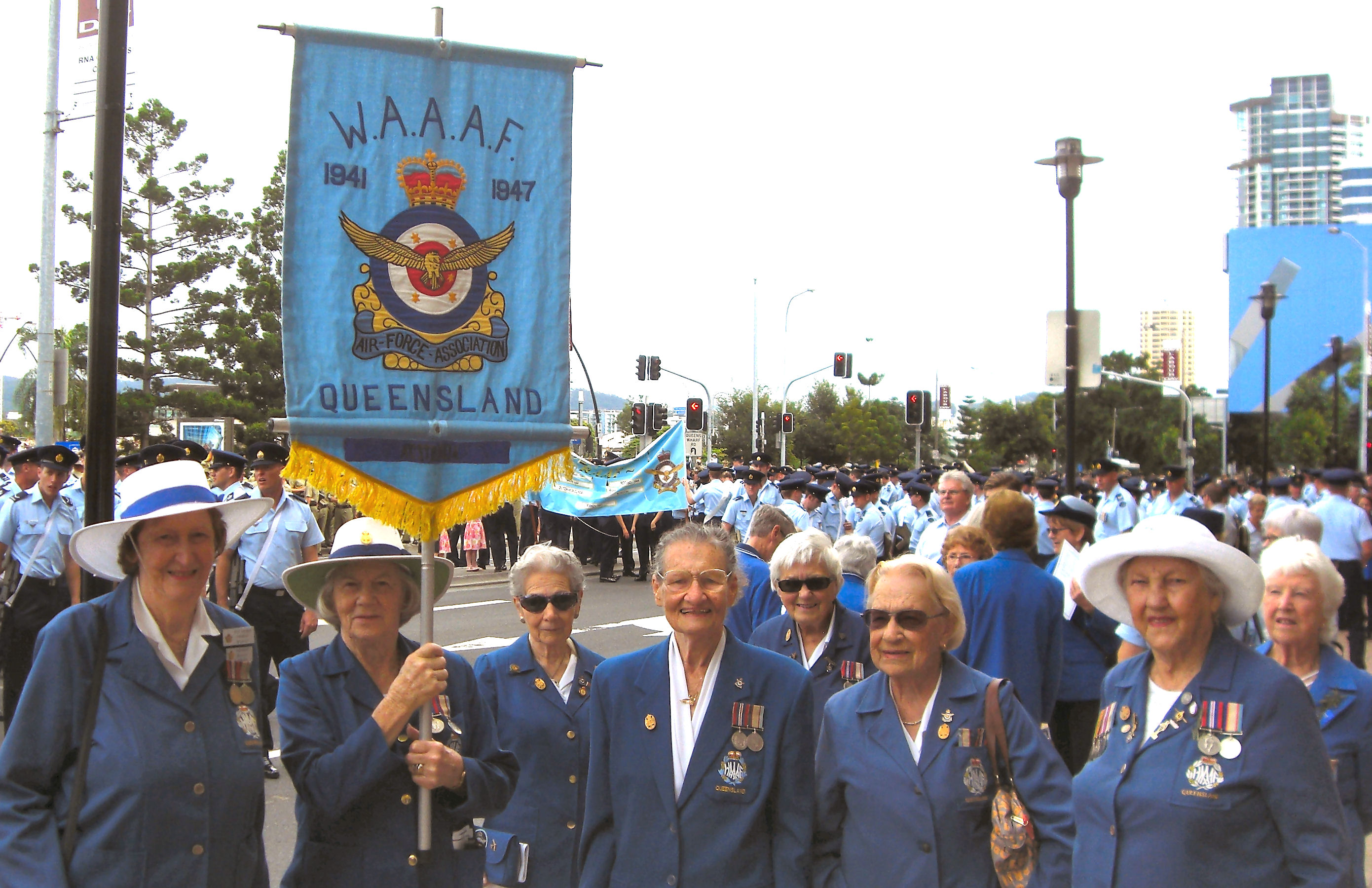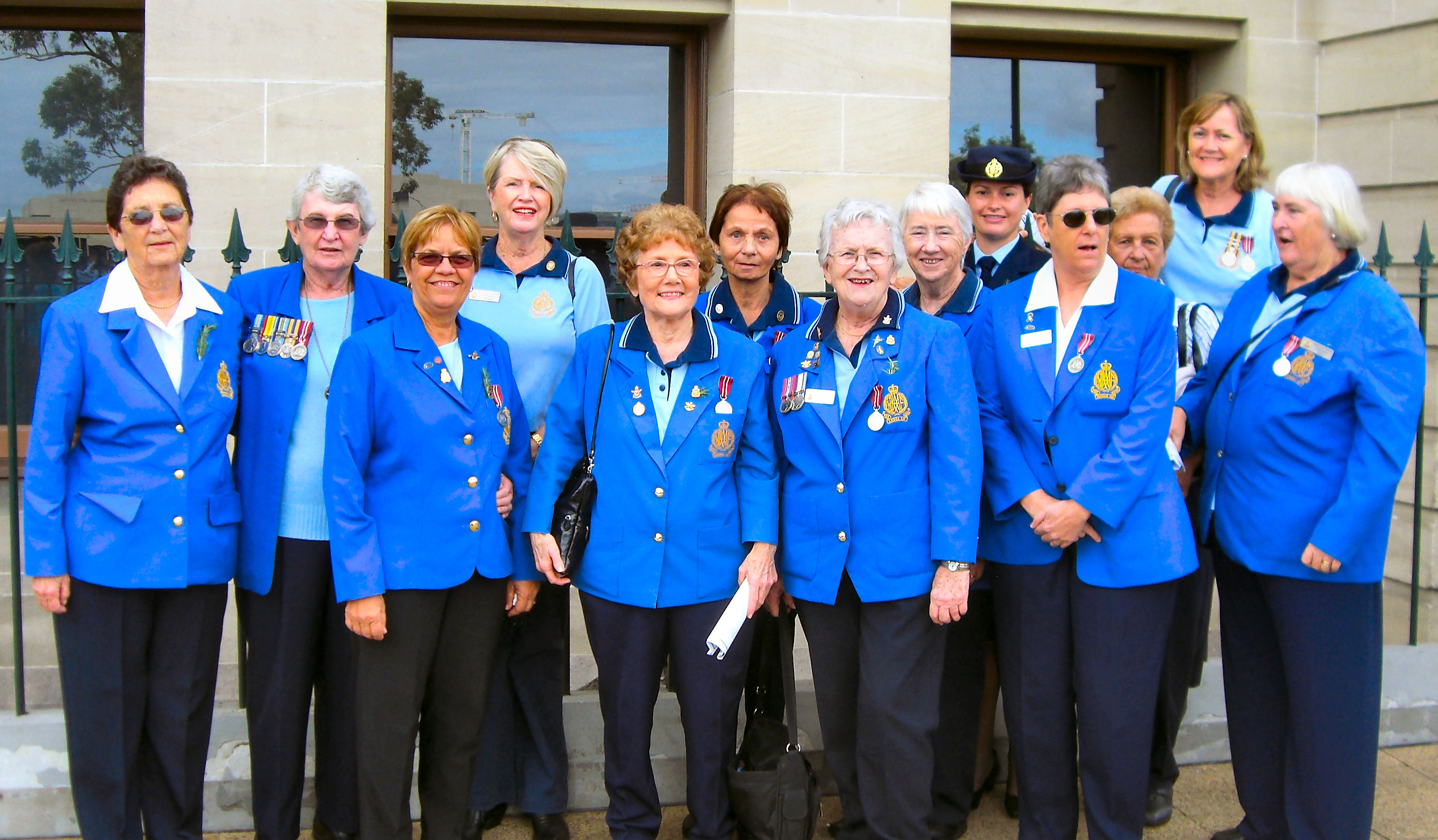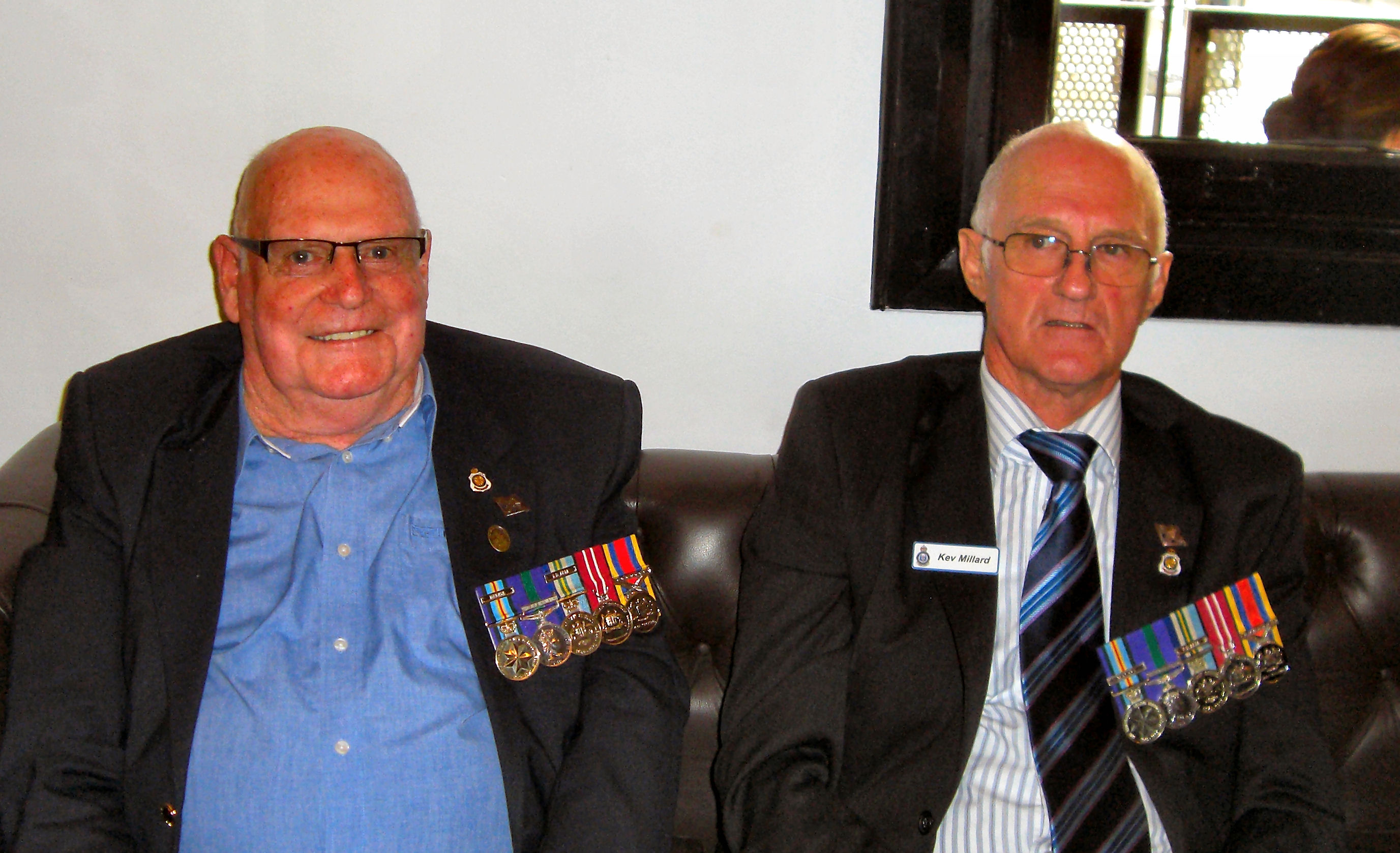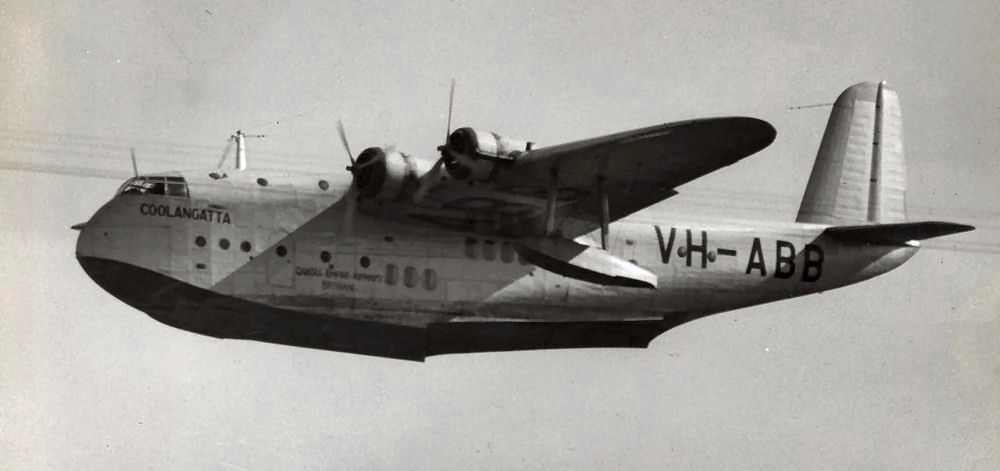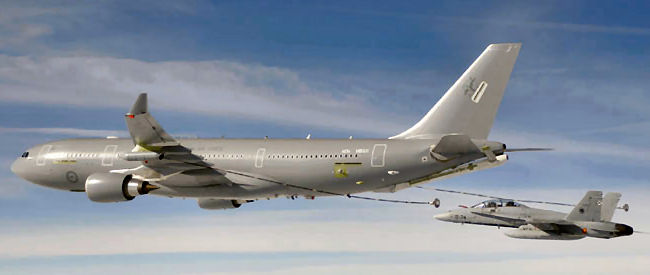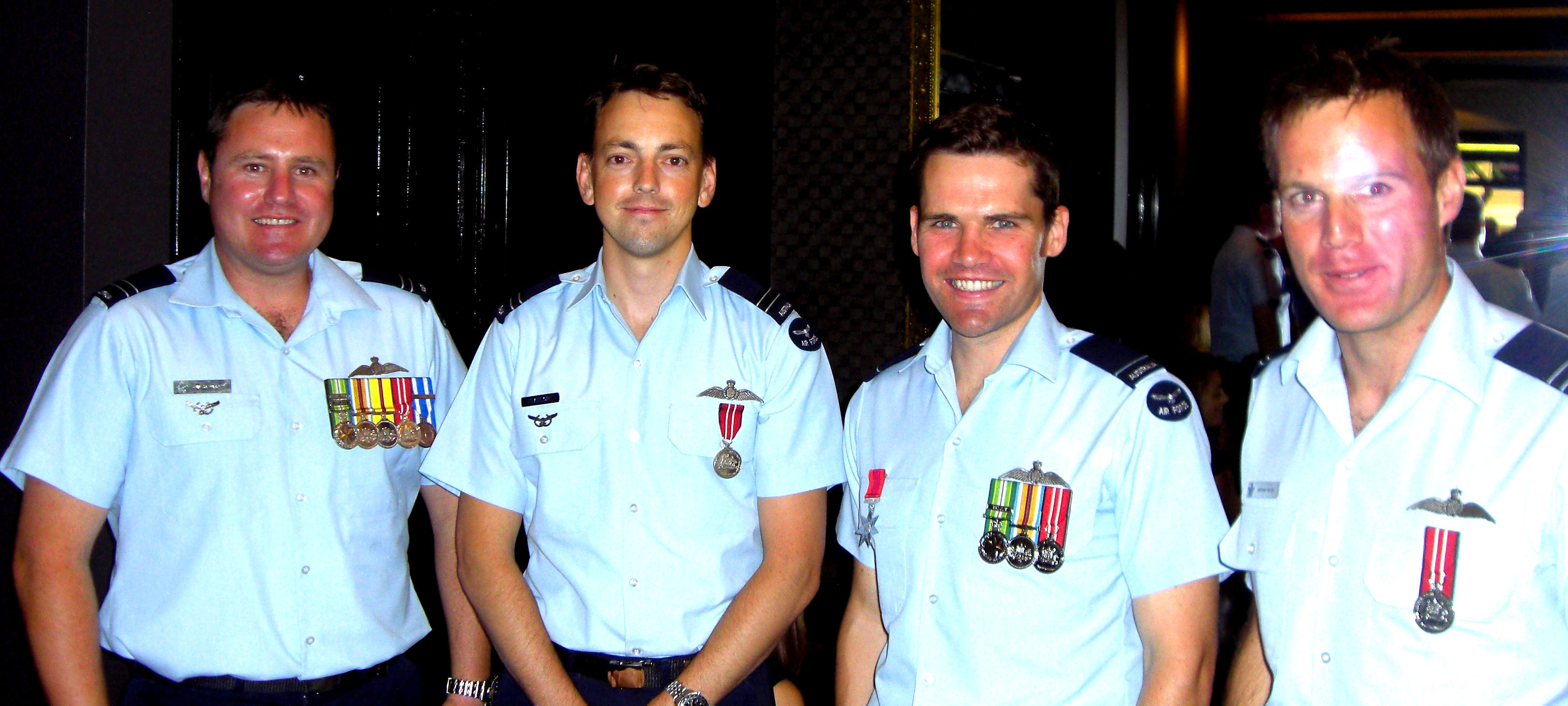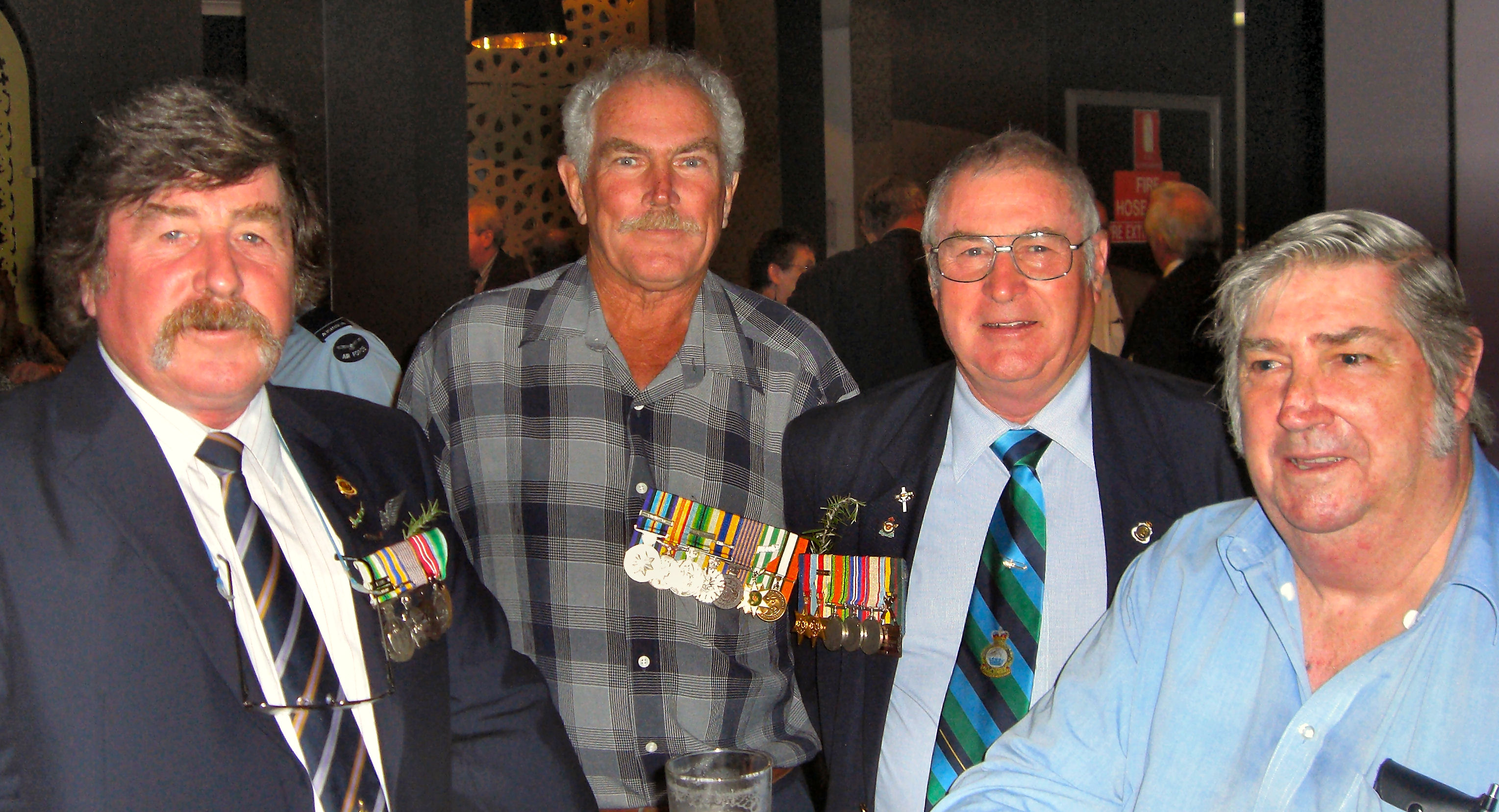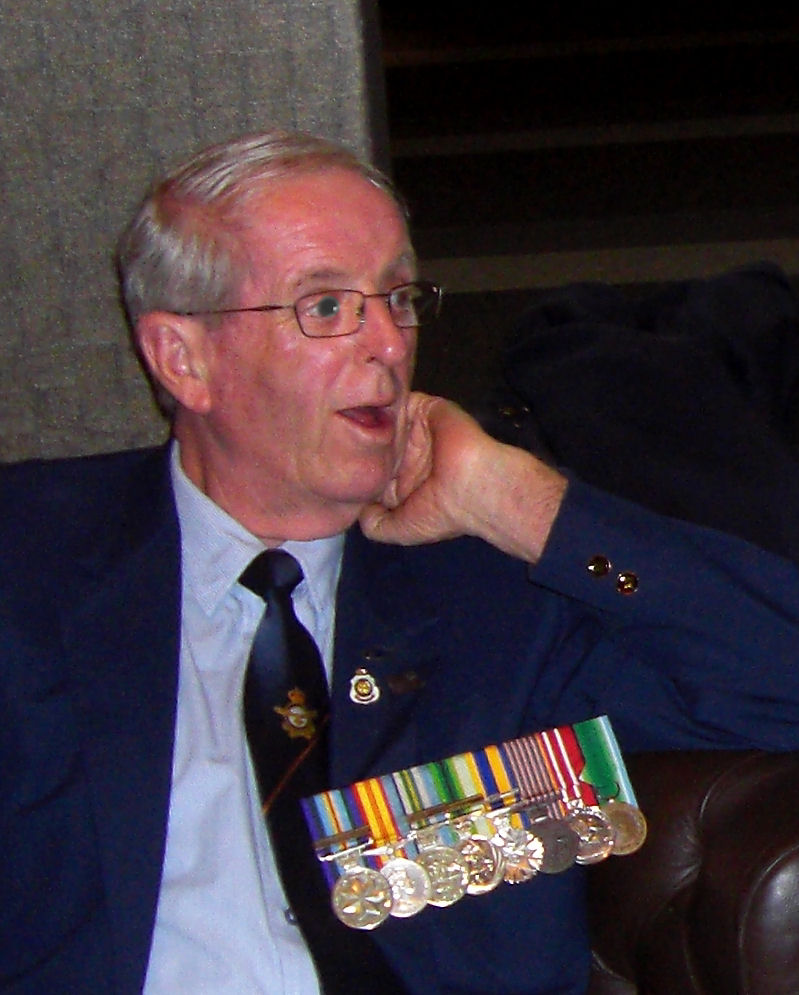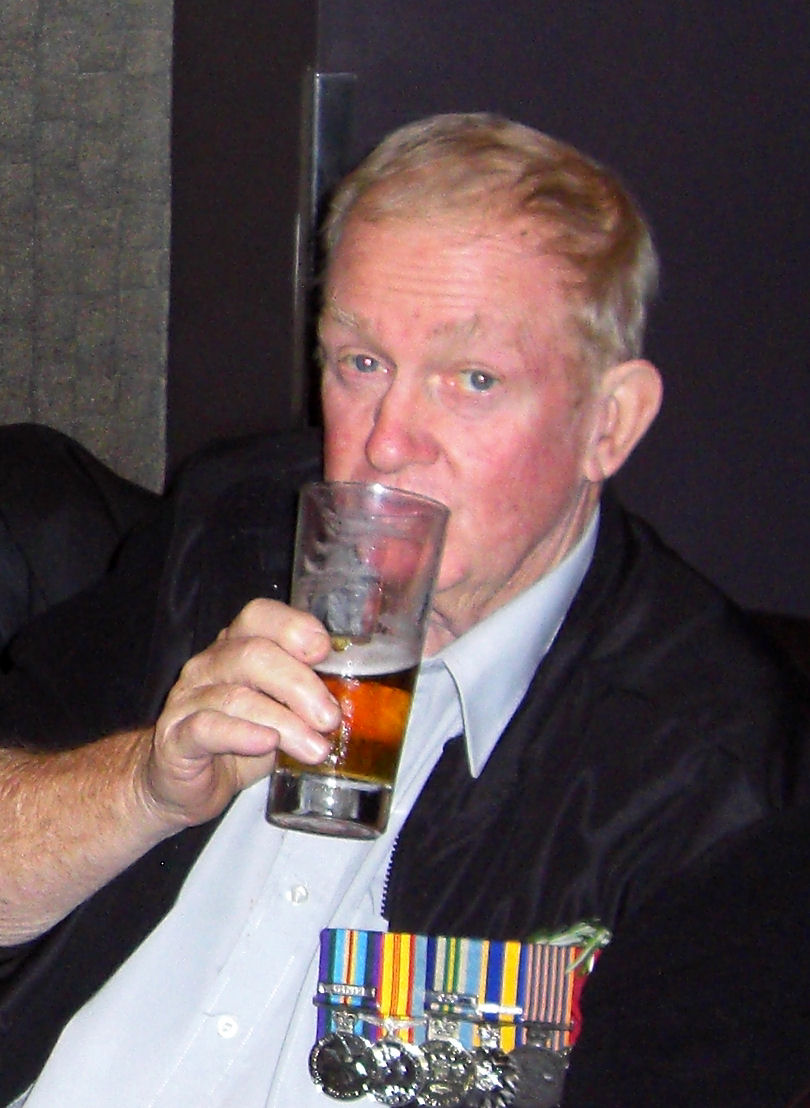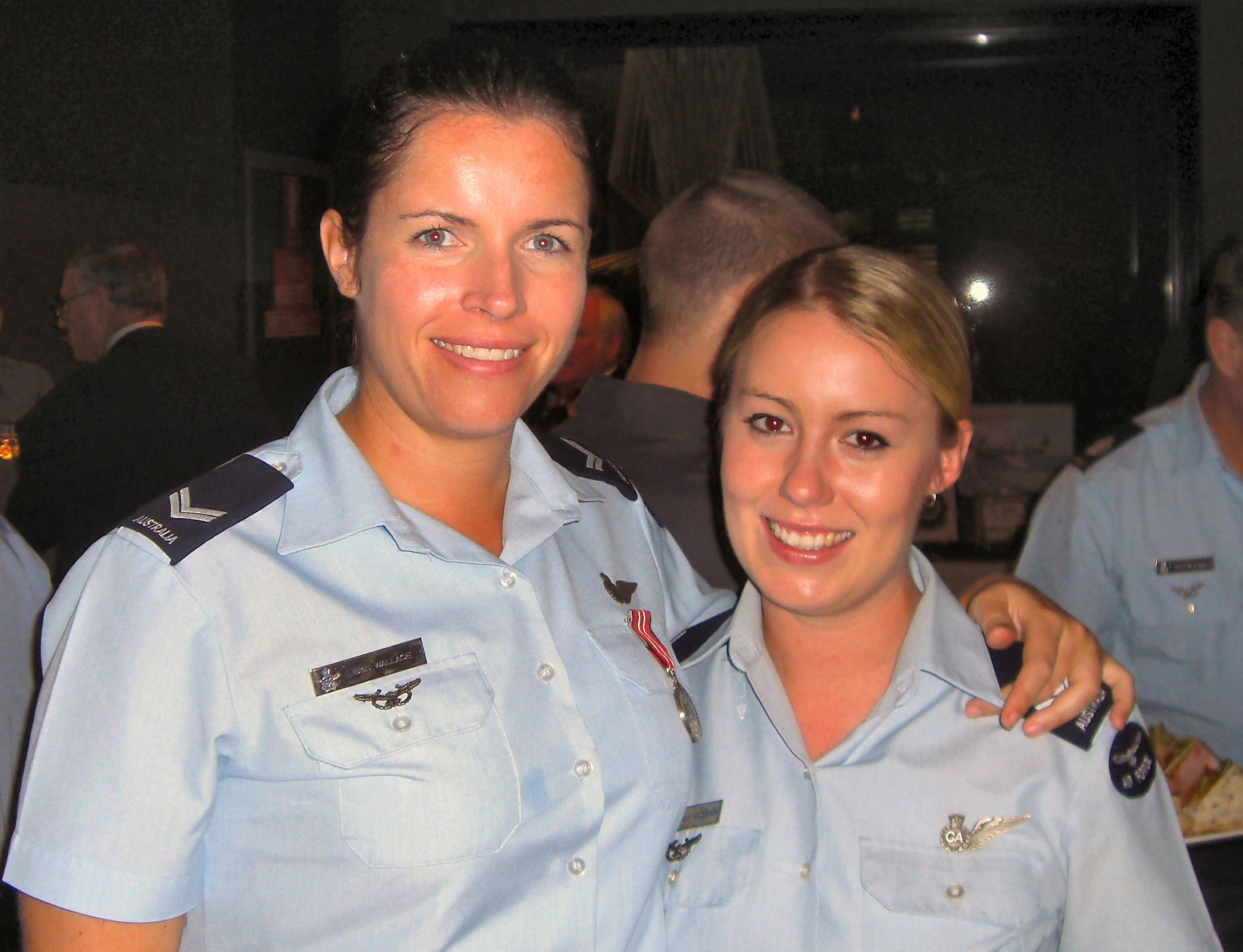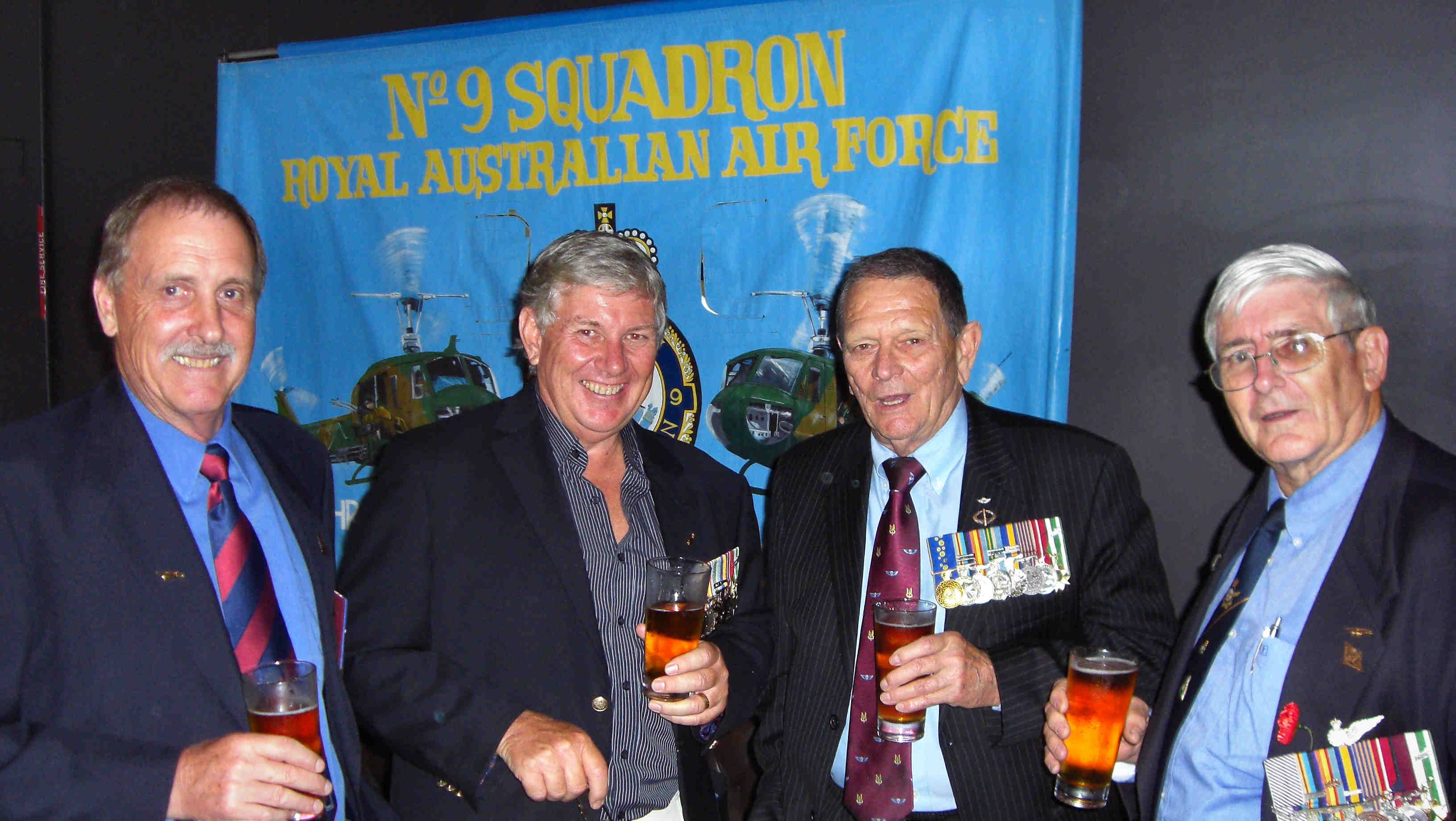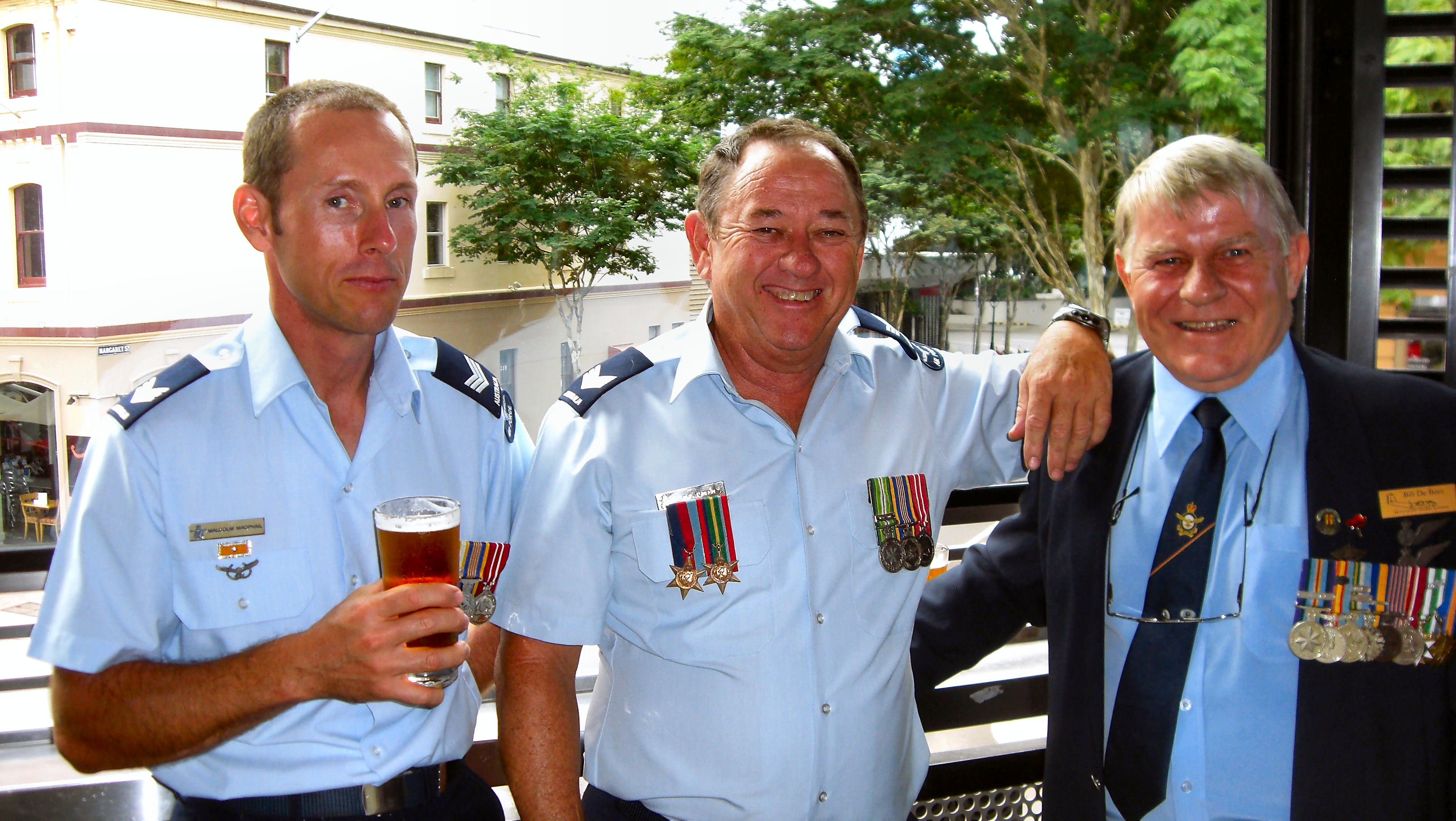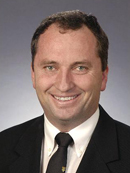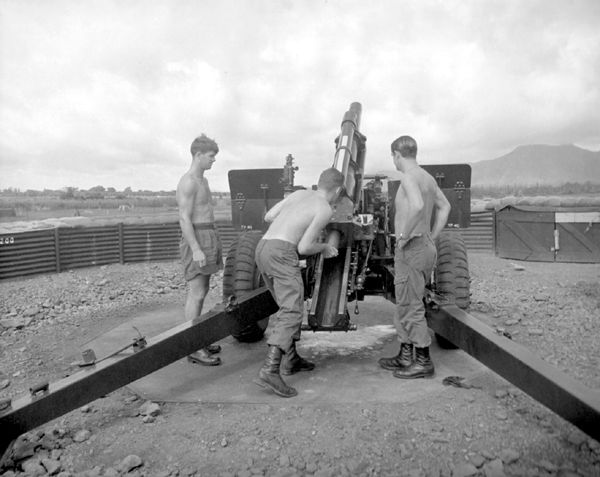|
Radschool Association Magazine - Vol 35 Page 14 |
||
|
Privacy Policy | Editorial Policy | Profit Policy | Join the Association | List of Members | Contact us | Index | Links | Print this page |
||
|
|
||
|
Anzac Day 2011.
These lovely and still spritely ladies, all past members of the Women’s Auxiliary Australian Air Force (WAAAF) and who were such an important part of the RAAF during the war, proudly marched under their own banner. They are: (Click the pic for a better view)
|
||
|
L-R: Pett Rayner, who served from 1944 to 45 as a Teleg, Alma Edwards from 1942 to 45, also as a Teleg, Jean Curry as a Stewardess at Oakey from 1944 to 45, Bubby Price who ran the Sergeants Mess at Kingaroy from 1941 to 45 and Thelma Hughes, who had the swan job as Clerk G at Sandgate from 1943 - 45.
|
||
|
The WAAAF was formed in March 1941, after considerable lobbying by women keen to serve and by the Chief of the Air Staff who wanted to release male personnel serving in Australia for service overseas. The WAAAF was the first and largest of the World War II Australian Women's Services and by the end of 1941 some 1500 girls were serving. This number grew to a peak strength of 18,667 by October 1944. They served in all states of Australia, from Cairns in Northern Queensland to Geraldton in Western Australia.
The girls were accepted into 73 different musterings including highly skilled technical employment on aircraft. In addition to telegraphists, women became armament workers, electricians, fitters, flight mechanics, fabric-workers, instrument makers and meteorological assistants, besides using skills in many clerical, medical, transport, catering, equipment, signals and radar fields of employment. Over 700 women held commissioned rank and like airwomen, worked in a great variety of administrative, technical and professional tasks. A number commanded units in operations rooms, at General Douglas MacArthur's Headquarters in Brisbane dealing with intelligence matters, at Operational Units, in RAAF Hospitals, Aircraft Depots, Radar Stations, RAAF Bases – wherever they were needed, they served. But, they were paid two-thirds of RAAF male pay for equivalent positions.
The WAAAF was disbanded in December 1947.
|
||
|
Some former day WRAAF’s
The WRAAF’s were well represented by these lovely girls, all of whom proudly wore the ‘Uniform” of the WRAAF Association. We seem to be one name short here, we have 13 beautiful girls and only 12 names, apologies to whom we missed (please let us know so we can fix it). They are: (Click the pic for a better view)
|
||
|
L-R: Margaret Humphreys, who was a Clerk A from 1959 to 1963, Margaret Stevenson, 1958 – 60, also in the clerical game, Linde Cavanagh, from 1970 – 73 as an Equipo, Malvene Dicker, Teleprinter and crypto in the early 60’s, Mary Watkins, who was a Teleg from 1957 – 63, Maureen Souter, who was a Clerk A from 1965-71, Dierdre Nolan, Clerk Equip from 1957-61, Margaret Huntley, transport driver from 1963-65, Kirsten Nicolle, who joined in 2005, studied Avionics at Wagga and who now works on the Hercs at Richmond, Faye Wilson (Hindle) AMO from 1973-78, Maureen Groves (Stone) Clerk Admin from 1956-60 and Margaret Bruce (Kamerling) who was an Ed Assistant from 1959-61
|
||
|
Malvene was one of our beautiful Page 3 girls back in April 2010 and Kirsten was up from Richmond, holidaying in Brisbane and marched with the ‘old’ girls.
Most of these girls were forced to leave the RAAF only because they committed the RAAF’s cardinal sin of the time – and got married. How brilliant was that, the RAAF spent tons of time and money training these girls to do a responsible job, then the minute they got married, kicked them out. Blokes, on the other hand, could get married, divorced, married again, do what they liked and Mr RAAF didn’t care one bit. Thank goodness that stupid law was dumped.
|
||
|
3 Sqn.
|
||
|
|
||
|
John Monkhouse, and Kev Millard, both ex 3 Sqn armourers.
|
||
|
33 Squadron.
33 Squadron was first formed in 1942, during World War II and equipped
with four Short Empire flying boats. Less than two weeks later the
Squadron suffered its first loss when one of the Empires was destroyed
in a landing accident at Townsville; the six crew members were killed. A
The Squadron transferred to Port Moresby in 1943, from where it provided air transport to Australian forces involved in the New Guinea campaign. In October that year it was re-equipped with DC3’s which it operated for the rest of the war after which it was tasked with repatriating service personnel and former prisoners of war. It was disbanded in Townsville in 1946.
The Squadron was re-formed in February 1981 and equipped with two modified Boeing 707s. It was also responsible for providing long-range transport to Australian and visiting VIPs. In 1983, it acquired two further 707s, and a further 2 were purchased in the late 1980’s and four of these aircraft were converted to Tankers to refuel the F/A 18’s. In October 1991, one of the Squadron's transport-configured Boeing 707s was lost when it crashed in the sea off the coast from East Sale, during a training flight; all five crew members were killed.
The VIP role was relinquished in 2002 when 34 Sqn received its Boeing 737 Business Jets. In 1998, 33 Sqn was asked to provide air-to-air refuelling support to Coalition forces in the Middle East and again in 2002 in Afghanistan. The last Boeing 707 was retired in mid-2008, bringing to an end the 29-year operational history of the type in the RAAF. (See HERE)
In mid 2008 the Squadron relocated to Amberley and became the perfect Squadron – it had no aircraft. The Squadron awaits delivery of the new KC-30A tanker-transport aircraft from Airbus, which were originally due to be delivered in 2008.
|
||
|
L-R: James Barden, Paul Taylor, Stephen Gibbins, Nathan Wilks.
|
||
|
The 4 blokes, above, have the enviable task of flying the RAAF’s new Airbus A320 inflight refuelling tankers. (Click the pic for a better view)
|
||
|
An enormously wealthy 65-year-old man falls in love with a beautiful young woman in her twenties and is contemplating a proposal. "Do you think she'd marry me if I tell her I'm 45?" he asked a friend. "Your chances are much better," said the friend, "if you tell her you're 90."
|
||
|
Vungers’ Boys.
The four blokes below were all in Vung Tau in the late 1960’s, early 1970’s, though only 1 was with a squadron that flew real aeroplanes, the other 3 were with a squadron that had those noisy helicopter things. They are: (Click the pic for a better view)
|
||
|
L-R: “Al” Pickering, 35 Sqn radio, from June 1970 to Jan 1971; Ian “Tex” Hayne, 9 Sqn Sumpie from March 1970 to March 1971; Wayne ‘Whiskey’ Carter, 9 Sqn Eleco from May 1968 to May 1969; Alan Crawford, 9 Sqn Framie, from June 1968 to May 1969.
|
||
|
|
|
|
|
|
||
|
John Donohue, fatigue meter reader, 38/35 Sqn |
Wally Jolley, Sparky 38/35 Sqn |
|
|
|
||
|
33 Squadron Crew Assistants.
These two lovely girls are in one of the RAAF’s “newest” jobs – airborne Crew Assistant. Their job description says their role is to provide safety, comfort and in-flight service to passengers and crew on RAAF aircraft operated by 33 SQN and 34 SQN. (Boys - click the pic for a better view) They are:
|
||
|
Erin Wallace, Daniella Olofsson
|
||
|
Their primary duty is to ensure the safety and survival of all passengers in an emergency situation. Other duties include the provision of in-flight food and beverage service; loading and unloading of passengers; compilation of aircraft documentation; calculation of aircraft weight and balance (34 SQN only); observation of aircraft / cabin condition; liaison with aircraft Captain; and general cleaning duties on the aircraft.
If we had the option of choosing whether to have one of these beautiful girls or John Mac tell us where to sit – we know who we’d choose…..sorry John.
9 Sqn.
These three blokes from 9 Squadron, were joined by a bloke who used to use their aircraft to get a one way ticket into the bush all those years ago and who really looked forward to them coming back to pick him up some time later. (Click the pic for a better view) They are:
|
||
|
L-R: Ron Mitchell, 9Sqn Pilot; Lachy Milne, 9Sqn Pilot; Graham Brammer, SAS, OAM: Terry Pinkerton, DFM, MID, 9Sqn Sumpie.
|
||
|
A couple of radio blokes, slumming it with an old sumpie? (Click the pic for a better view) |
||
|
L-R: Malcolm McPhail, 33 Sqn, AVTECH; Phil Turner, 33 Sqn, AVTECH, Bill DeBoer (MID), most things (see HERE).
|
||
|
Malcolm and Phil are based at Amberley, awaiting their new aircraft, the Airbus Tankers. Bill started his RAAF career as an engine fitter, transferred to being a Load Master on Caribous, did a stint in Vietnam from Dec 1969 to Dec 1970, then on return to Aust, was posted to Hercs and then Boeing 707’s, and trained as a flight engineer. He then got this civvy tickets and eventually held engineer ratings on Boeing 747’s and 707’s.
Anzac
Day.
Barnaby Joyce
On August 9, 1916, a boy from Condongblonga Station, near the town of Adelong, 100km as the crow flies from Canberra, walked into an office, told people he was 21 when he was actually 16, and got himself enlisted. His regimental number was 1637 in the Australian Flying Corps.
He made the mistake of refusing to salute a British officer and, for his
efforts, his leave was cancelled and he was sent to the Western Front.
His role during World War I would be a radio operator. The conditions
were terrible. He would complain that his radio aerial was continually
shot down. In the miserable mud and cold, he ended up getting double
pneumonia and was in a very bad way. Fortunately a nurse took him into
her direct care and nursed him back to health. He was medically
discharged on the July 27, 1919, and returned to Australia on a hospital
ship. His record was not exemplary beyond his peers, but it was
exemplary that a person would take themselves completely out of their
comfort zone in country NSW.
Was it for adventure or was it for patriotism? Only he could answer that question. Later on, the memories of the Western Front would bring recurring nightmares and remained a traumatic experience for life.
In a small coastal village south of Christchurch, a young man at the age of 19, the youngest of seven children, decided to pursue a career in the army. He enlisted just before World War I. As a bombardier in the first New Zealand expeditionary force, he was sent to Gallipoli on April 25, 1915. On the May 17, 1915, he was promoted to sergeant. He arrived at Gallipoli on the first day of the campaign and stayed there throughout the campaign except for a brief period when he was evacuated and hospitalised. On October 21, 1915, he was appointed battery sergeant major. He left Gallipoli on the last day. On April 7, 1916, he embarked to France for the Western Front. Some of the horrors from this time stayed with him for the rest of his life.
An example was the killing of all the men around him and his survival due to being mounted on a somewhat blind but what he considered a lucky horse. As a sergeant he was awarded a Distinguished Conduct Medal for bravery under fire, at Messines Ridge and Bapaume. He was highly respected by his men as a person of immense character. After World War I, he stayed in the army, becoming a regimental sergeant major.
On my wall at home, I have a photo of him sitting beside the Prince of Wales, later King Edward VIII, with his bodyguard standing behind and a British officer sitting to the right of the prince. In World War II he was still in the army and had progressed to be the commander of the royal artillery for the New Zealand 3rd Division engaging the Japanese in the Pacific. He set up the gun emplacements around the city of Noumea in New Caledonia. He ended up serving in the army for 36 years and 233 days. In World War I, he served four years and 250 days and, in World War II, he served one year and 261 days.
These people mentioned were my two grandfathers. My father also enlisted in the army, ending up as a lance-bombardier. Unfortunately, or fortunately for me, his service came to an end when an anti-aircraft gun, which was being loaded, swung out and smashed his legs. My grandmother, who was English, had either six or seven brothers, we were never quite sure how many. What we do know is they were all killed in war. Every family has its connection to Anzac Day. The longer our nation prevails the more there are descendants of those who have given military service to protect our nation.
Anzac Day is enmeshed in the finest thread of our nations’ tapestry. Everybody on Anzac Day feels a connection to the fact that, if it wasn’t for them, we wouldn’t be here.
That is why we remember them.
Agent Orange.
It seems there are more battles looming between the AWM and its official Historians and the VVAA. Graham Walker is a senior and long serving member of the VVFA and he has been fighting this for a long time. See HERE
|
||
|
Back in the 1800's, the Tate's Watch Company of Massachusetts wanted to produce other products, and since they already made the cases for watches, they used them to produce compasses. The new compasses were so bad that people often ended up in Canada or Mexico rather than California. This of course, is the origin of the expression: "He who has a Tate's is lost!" Sorry Rupe!! |
||
|
|
||
|
Back Go to page: 1 2 3 4 5 6 7 8 9 10 11 12 13 14 15 16 17 18 19 20 Forward |
||
